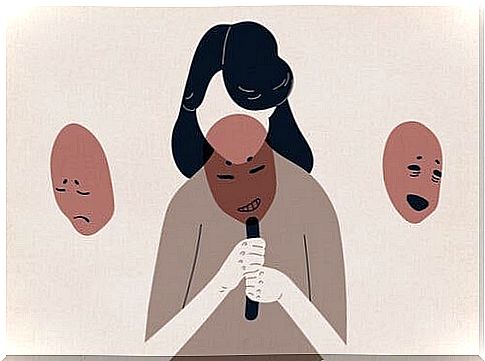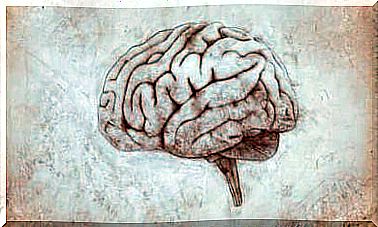Psychodrama Techniques

Psychodrama is a technique or set of therapeutic techniques that promote the staging / dramatization of reality from a specific point of view. Through the techniques of psychodrama we try to induce the patient to express unexpressed, repressed or poorly understood feelings to encourage catharsis and the adoption of a new behavior.
The elements to work can be linked to memories, present and future events. For this reason psychodrama is very useful for all disorders, from depression and those included in the spectrum of anxiety to eating disorders or emotional management.

Psychodrama techniques: what objectives?
The techniques of psychodrama have several objectives:
- Gain a real and deeper understanding of a specific situation. Psychodrama can be applied both to situations lived long before that may have left wounds that have not yet healed and to distressing situations that generate anxiety about the future.
Psychodrama techniques can help us get in touch with the emotions experienced and the sensations they have generated or continue to generate. It is about getting in touch with all those feelings, ideas and thoughts that usually have no place in our routine.
- Understanding points of view other than your own. Numerous psychodrama techniques allow us to put ourselves in the other’s shoes with respect to a conflict, whether it is real or not. Observing the way of thinking of others and above all participating in their speech can help us work on empathy and understand the motivation of certain acts.
- Skills training : some of these techniques allow us to take on different roles that we often don’t know how to manage. They can serve as a training for experimenting with other positions, behaviors, or even aspects of personality.
The rules of psychodrama
In techniques derived from psychodrama, the subject – or protagonist as he is often called in this field – does not verbally describe his conflicts.
This differs from the way we typically share, manage and think about our problems. Psychodrama wants to achieve a more authentic and profound participation.
Although the participation of more people is initially envisaged, as an audience that acts as an affective sounding board in the performance, in some cases it is made with fewer people or even with themselves.
When done with an audience, it can help us understand how other people are acting. The protagonist acts according to his emotions and criteria, in accordance with his subjective reality.
Psychodrama is also recommended for correcting certain personality styles, including more shy or introverted individuals. The protagonist at the beginning can be reserved and unnatural. There is nothing to worry about as long as nothing is forced.
The change in psychodrama
What is really interesting about techniques derived from psychodrama is that intuition, awareness or understanding is achieved through the dramatization itself.
The presence of a therapist is not essential, nor are verbalizations. This insight is accessed not thanks to something the therapist says, but that arises spontaneously from that performance.
Psychodrama techniques
Explicit inner dialogue
The soliloquy technique wants to make the protagonist express what he is thinking and feeling before facing a certain situation. This situation could distress him in the present, just as it could have made him feel distressed in the past.
It can be helpful when we get a call from our boss or when we are afraid of being abandoned when we start an argument.
Similarly, this technique is used to get in touch with what one thinks and feels about a certain event that usually does not manifest itself.
The part tries to express aloud what, during a dialogue, a confrontation or a discussion, is silenced out of fear, shame. This behavior is like a parenthesis that allows the person to get in touch with his own reality.
Exchange of roles
The role-swapping technique consists in representing a specific situation in which we are involved. It can be a conversation with a friend or a business meeting.
The protagonist plays the role of the other, of that person with whom he has quarreled, who did something he did not like or that made him feel distressed.
In this way, the protagonist sees the situation from another perspective, so he is able to generate other emotions and understand those that led the other person to act in a certain way.
The protagonist and the auxiliary ego
Some of these techniques require the presence of an auxiliary ego. This ego welcomes those forgotten aspects within interactions, which often contain very valuable information.
In the double technique, the auxiliary ego is placed behind the protagonist, and while the latter speaks, it verbalizes the issues not expressed by the protagonist, as a way to expand the discourse.
Those problems that are not made explicit are often of a threatening, painful or semi-unconscious nature. The ego, by manifesting issues it deems relevant, returns the alienated parts of itself to the protagonist and takes him to more hidden levels.

The mirror technique also uses an auxiliary ego. In this case he does not speak, but stands in front of the protagonist and while he dramatizes a situation, he proceeds to imitate his non-verbal behavior. This includes gestures, positions, tics, facial expressions.
The elements that we usually consider relevant are the verbal ones, what the person expresses to himself. However, non-verbal behavior also has meaning and can be much more informative than the message itself.
Change reality
Techniques derived from psychodrama such as extra reality allow the protagonist to have another experience of something that has already happened. Extra reality tries to undo events as they happened, so that the protagonist has the opportunity to experience them in a different way.
Living situations that have already happened in the way we would like to have experienced them can lead us to understand the pain we felt at that moment. Furthermore, it projects us into another symbolic reality to deepen that pain and have the necessary peace to start healing.
The technique of the replacement role (very similar to that of the exchange of roles) recreates a situation that the person is afraid of living. This can be a childhood memory, a meeting with the boss, the loss of a partner or a close friend.
In this exercise, the person is not expected to put himself in the other’s shoes, but rather to put himself in another place. The aim is to induce the protagonist to perceive that situation without the emotional charge that comes from his off-stage role.
Living a childhood memory from the point of view of a brother, a cousin, a neighbor; staging the loss of a partner as a spectator, a friend who sees everything can lead to emotional detachment from the situation and make us begin to observe it with more calm and tranquility, to think, understand and empathize better.
Psychodrama techniques: conclusions
psychodrama is an excellent resource for achieving catharsis and for changing one’s behavior by understanding one’s feelings.
Not only useful for treating psychological disorders, but it is also extremely beneficial for those people who want to rediscover themselves, get emotionally discharged and connect with their feelings, sensations and thoughts that usually remain in the shadows.









